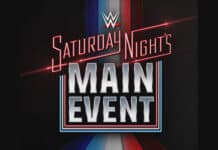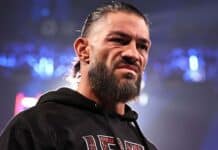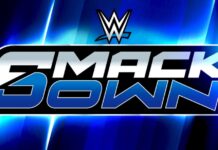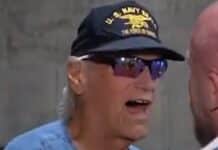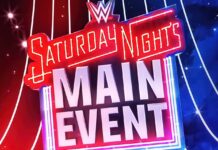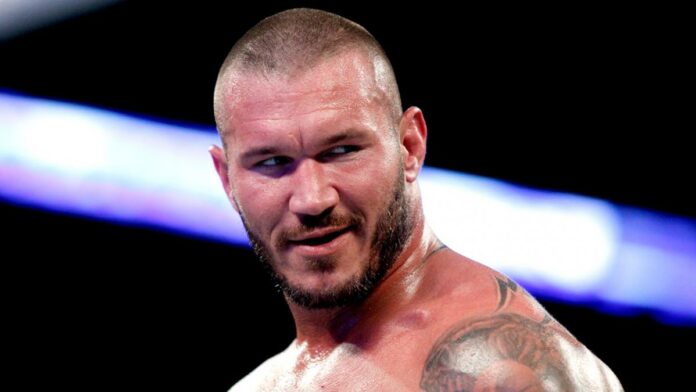
During a recent interview with Sports Illustrated, Randy Orton commented on wrestling being an art form, being bullied as a kid, and more. You can check out some highlights from the interview below:
On portraying a bully on WWE TV: “When I was younger, I was bullied, I was picked on. I know how that feels, so it’s just reversing that and being the bully, knowing what to do or say to get under somebody’s skin. Growing up, my younger sister just hated my guts. I took out being bullied at school on her. As far as where I get that motivation, I’m not sure there is just one explanation. I feel comfortable being the heel.”
On his development as a performer over the years: “I’ve changed a lot. In ’09, I had that good run with Triple H, and earlier in my career as ‘The Legend Killer,’ I was still feeling it out. My answer to everything was to have a very intense look on my face. Clench my jaw, and put it all in the look. I was never a promo guy. The past year, maybe two, I’ve looked at promos completely differently. A promo earlier in my career was something I had to get through so I could have that chance to kill it in the ring. I wish it didn’t take so long for me to figure out, but the promo, that’s where we tell the rest of the story. I look forward to continuing to concentrate on my promos. There was a lot there I was missing earlier in my career, and I don’t want to miss out on it anymore.”
On the art of wrestling: “What we do in that ring is performance art. There is an art form, and that’s lost on some guys. I’ve gone on record that a lot of our younger guys can be a little reckless. I’ve been around this long, and one of the reasons I’ve been around this long is my style. Although it might be a little slow and monotonous at times, when it comes to telling a story, you have to slow it down … If two guys are going 100 miles an hour, and they never slow down and they never sell, it’s a big fireworks show and I’m not getting any drama,” said Orton. “I’m not getting invested, and I’m not wanting to see more. When it’s over, it’s over, and onto the next train wreck. It’s too much. Less is more, sometimes. Sometimes you do need to slow it down. Sometimes you need to slow it down so the cameraman can find your face. When I’m watching the show on TV, there’s never a chance to get in and see what they’re feeling. See the color of their eyes and the small facial expressions that tell a huge part of the story. You don’t get that when it’s just physicality, physicality, physicality.”
On the need for talent to look at their career in long terms when laying out matches: “I know there are fans out there that love seeing guys risk their neck every night, and I can appreciate the guys that do that for their fans, but there is no longevity in it. You’re only as good as your last match. Getting a pat on your back from your peers because you had a good match is a huge thing, but then you’ve got another match the next night. And another match the next night. You can’t go off the top of a cage into a table from 30 feet every week. “You can’t dive to the floor and put yourself in that high-risk scenario every week, but these guys are doing it and I feel they’re dropping like flies. They’re all tough, they all work hard, and they’re all talented, but I look forward to being able to get in the ring with a couple of these guys and slowing them down, showing them my opinion on what makes a good match a good match.”
On what he wants to see more of in wrestling: “When you have A-Z memorized, it becomes a choreographed, physical, brutal, violent dance. It can be smooth, and it can look rough, and things can look hard-hitting, but when it comes down to it, slowing down and letting people see what you’re feeling–like someone getting dropkicked in the knee earlier in the match, and then 10 minutes later, you know why he’s limping across the ring. Selling, selling, selling. All those guys sell, but they need to turn up the selling meter and take a page out of some of these old-school guys’ books. You need to sell. I can’t stand when I see 10 false finishes in a row, where a guy takes a powerbomb and then he’s up and then he’s delivering a knee, and then the other guy ducks, and then it’s boom, boom, boom, boom. It’s too much. But because these guys are capable of doing it, because the fans are going to chant ‘Fight For-Ev-Er!’ and all that crap, they’re going to keep doing it because they think that’s what they’ve got to do to get that reaction. But sometimes the fans don’t need to make noise to be reacting. Sometimes they’re sitting and they’re watching with their mouths open, not saying a word, and they’re invested and paying attention. They want to see what you’re going to do or say next. That’s the disconnect between a lot of the main roster guys and the younger guys in NXT. They’re just hungry, they’re addicted to that chant from the crowd. They want the roof to come off the top of that building every single spot that they do. There’s no build to that. You’ve got to build to that. There’s a crescendo. You’ve got to start slower and then pick up the pace, then settle back down. It’s like a director of a symphony. It’s an art. We do it so much, and guys get injured so much, there’s a smarter way to do business. That’s my main concern.”
On recognizing the importance of his fans: “You hear this a lot, and it’s very true, because without my fans, I wouldn’t be where I’m at. No matter how hard I tried, no matter how much I respected the business, no matter how many nights I was away from my wife and my kids, none of that matters. It’s all about how those fans perceive me, and I’m very fortunate to have the fans that I have. I’ve had many ups and downs, some especially high highs and especially low lows, but there are a lot of people that have stuck with me. I never forget that.”

